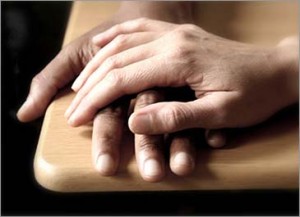 Your family life is rife with rituals that can send messages of compassion, kindness, and sharing to your children. When you sit down for a meal, you are sharing your food and each other’s company. When you hug and kiss your children good night, you are sharing your love. When you play games together, you are sharing your time. When you tell your children stories, you are sharing your knowledge and your imagination.
Your family life is rife with rituals that can send messages of compassion, kindness, and sharing to your children. When you sit down for a meal, you are sharing your food and each other’s company. When you hug and kiss your children good night, you are sharing your love. When you play games together, you are sharing your time. When you tell your children stories, you are sharing your knowledge and your imagination.
Our daughter Catie has a job chart on which she places little magnets signifying that she fulfilled her responsibilities that day. One of her responsibilities is to “be kind.” Every evening while completing her job chart, she has to recount to whom and how she was kind that day.
Both of our daughters have a piggy bank in which they deposit their weekly allowance. We ask them to donate 25 percent of their allowance to charity. Every few months, they take their charitable savings and donate it to a cause of their choice. In the past, they have given their money to earthquake victims in Haiti, a local non-profit organization that takes care of injured animals, and to a nearby homeless shelter. In all cases, Catie and Gracie take the money out of their piggy banks, put it in little purses, and delivers it personally to the charity.
Some friends of ours, Dirk and Emily, have a ritual with their son that involves giving away, rather than selling, his old clothes, books, and toys. They’ve told him that they choose to give away things that they could sell because there are many families that aren’t as fortunate as they and can’t afford to buy everything they need. Every time their son gets something new, he has to give away an old item (this also reduces clutter in their home).
Ron and Georgia participate in a local program called Homeward Bound in which they take turns with other families buying, packing, and delivering groceries to families living at a homeless shelter. Every other month, they and their three children complete a ritual to support Homeward Bound. The family sits down at the kitchen table and compiles a list of groceries they want to buy, paying special attention to the time of year and the upcoming holidays. The kids paint the shopping bags that will hold the food in bright colors and make cards for the family. Each of their children also selects a small toy from their room for the children of the recipient family. The entire family then goes to the supermarket and the children are responsible for finding and checking off the items on the grocery list. When they get home, the family packs the groceries and then delivers them to the family at the shelter. Ron and Georgia’s children introduce themselves to the family and hand the shopping bags full of food to them. At dinner after the delivery, everyone shares what the experience meant to them, what they learned from meeting the family, and one other thing that they might do to express their compassion.
Yes, acts of compassion can be big and noticeable. Yet, the power of compassion learned by children is best woven into the fabric of your family’s lives. Every little act of compassion that you and your children engage in or see within your circle of family, friends, and neighbors every day sends indelible messages of kindness, caring, and sharing that will be embraced and expressed by your children throughout their lives.
This blog post is excerpted from my third parenting book, Your Children are Listening: Nine Messages They Need to Hear from You (The Experiment Publishing, 2011).

